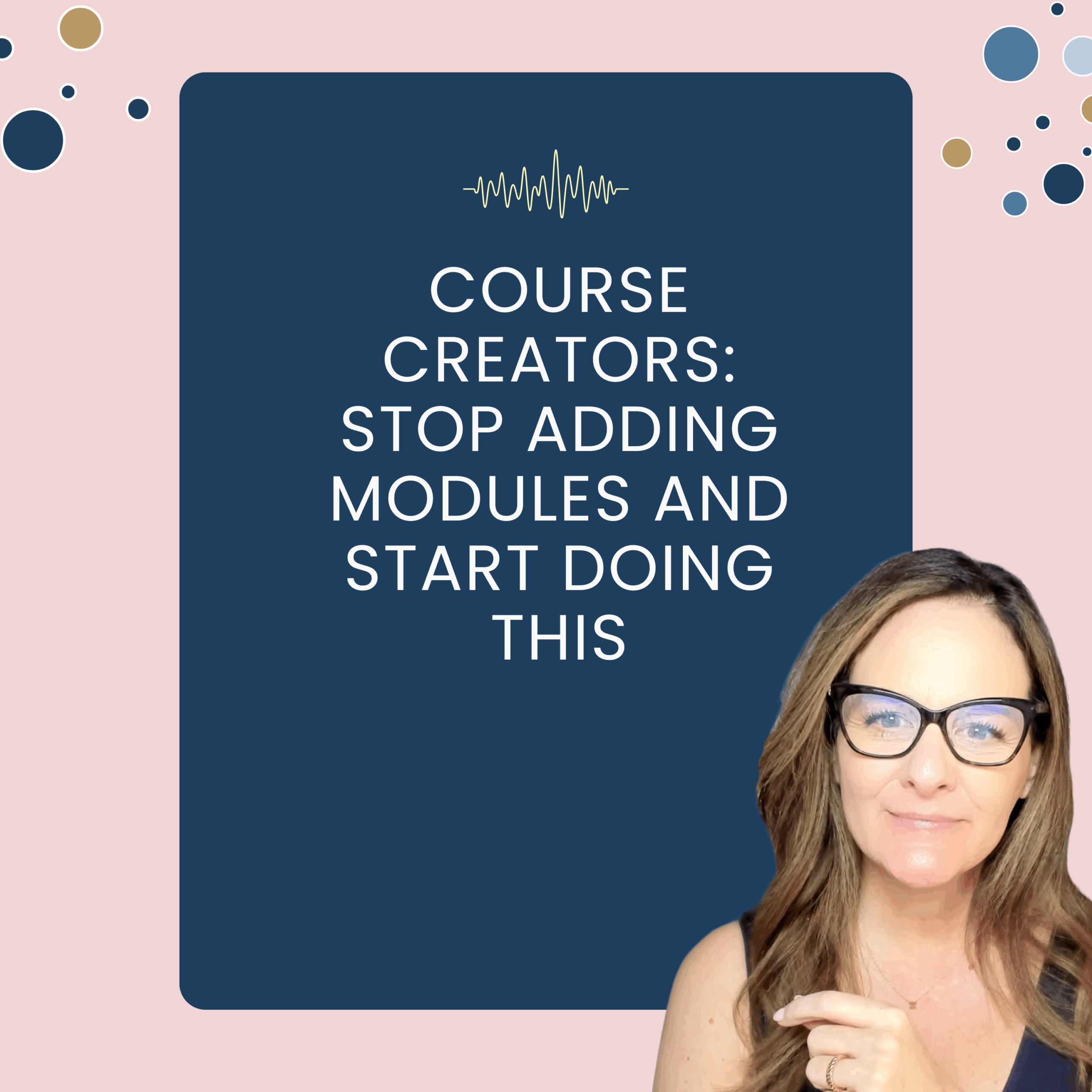🎧 Listen: Apple, Spotify, iHeart
Building a course community is exciting. At first, the energy is through the roof—students are posting, sharing their wins, celebrating with badges and virtual high-fives—it feels amazing! But once that initial excitement dies down, you might find yourself asking, “What now?”
If you’re not careful, that once-buzzing community can turn into a ghost town, with engagement dipping and members disappearing. But fear not! In this post, we’re diving into how to keep your community thriving long-term. We’re not just talking about keeping students engaged during the course, but how to keep them around, contributing, and excited even after they’ve completed the final module.
Because here’s the truth: your community isn’t just a tool to support your course—it’s a space that should keep members coming back long after the coursework is done. Let’s talk about how to turn that short-term hype into long-term retention!
Why Engagement Isn’t Enough
It’s easy to fall into what I like to call the engagement trap. You see a lot of activity during the course—members are asking questions, participating in discussions, and it feels like your community is thriving. But here’s the catch: if you don’t have a plan for what happens after the course ends, that engagement can quickly fizzle out. Without a post-course strategy, you risk losing all that momentum.
This brings us to why retention matters. When people stay in your community beyond the course, they don’t just stick around—they become advocates for your brand. They’re the ones who will sign up for your future programs, recommend you to others, and even help onboard new members. These long-term members are essential for the growth and sustainability of your community.
Finally, let’s talk about the community lifecycle. Think of your community as a living, breathing organism. It has different stages, from the initial burst of excitement to deeper connections and ongoing relationships that keep people coming back. Just like any relationship, your community needs to be nurtured through each of these stages.
So, how do you move from short-term engagement to long-term retention? Let’s dive in!
What Retention Really Looks Like
Retention is about more than just keeping people around—it’s about creating a space where they want to stay. Here’s what retention looks like in a thriving community:
- Ongoing Value: Your community can’t just end when the course does. It needs to continue offering value, or people will drift away. Think about offering advanced content, expert Q&A sessions, or bonus resources. The goal is to give members a reason to stay engaged and keep coming back for more.
- Building Connections: One of the strongest retention drivers is the relationships your members build with each other. When members feel connected, they don’t want to leave. This is where small group discussions, accountability partnerships, and even off-topic conversation spaces come into play. When people feel like they belong, they stick around.
- Post-Course Engagement: Your community shouldn’t feel tied solely to the course. Offer ongoing learning opportunities like monthly live events, workshops, or collaborative projects. This keeps your community relevant and engaging long after the coursework is done.
- Ownership: People are more likely to stay if they feel like they have a stake in the community. Empower your members with leadership opportunities—let them lead discussions, host live events, or run challenges. When members feel like they’re part of the community’s fabric, they become more invested and committed to its long-term success.
Step-by-Step Strategy to Keep Your Community Thriving
Now that we’ve covered why retention matters, let’s get into the how. Here’s a step-by-step strategy to keep your community thriving long after the initial course excitement has faded:
Step 1: Create a Post-Course Content Plan
Just because your students finish the course doesn’t mean the learning—or engagement—has to stop there. Plan ongoing content that keeps members coming back. This could include monthly workshops, expert Q&A sessions, or exclusive content drops. Think of it like bonus material that continues to provide value even after the coursework is done. This keeps the momentum going and gives members a reason to log in and stay engaged.
Step 2: Foster Deep Connections
One of the biggest reasons people stick around in a community is the relationships they form. Encourage peer-to-peer interaction through small group discussions, accountability partners, or even informal chats where members can connect beyond the course material. When people start building meaningful connections, your community becomes more than just a learning space—it becomes a place they want to be because of the relationships they’ve formed.
Step 3: Introduce New Challenges and Projects
After your course ends, don’t let things get stagnant. Introduce new challenges or collaborative projects that allow members to apply what they’ve learned. You could run a 30-day challenge where members work toward a specific goal tied to your course content, or set up group projects to encourage collaboration. Keeping things fresh and fun keeps members engaged and motivated.
Step 4: Empower Members with Ownership
The more ownership your members feel, the more likely they are to stick around. Empower them by giving them leadership opportunities. Let them host discussions, moderate groups, or even run events. When members feel like they have a role in shaping the community, they become more invested in its success. Giving members a stake in the community helps them feel like they’re part of something bigger, boosting their sense of responsibility for keeping the community active long-term.
Closing Thoughts & Takeaways
Let’s wrap things up! Today, we talked about how to keep your community thriving long-term. Here’s the bottom line: engagement is great, but retention is what will keep your community alive and growing. Your goal should be to build a space where people want to stay—where they find value, build connections, and feel empowered to contribute.
Here’s a quick recap of the retention strategies we covered:
- Create a post-course content plan that continues to offer value after the course ends.
- Foster deep connections between your members—relationships are the glue that holds your community together.
- Introduce new challenges and projects to keep things fresh and exciting.
- Empower your members by giving them ownership—when they feel like they have a stake in the community, they’ll stick around for the long haul.
Retention doesn’t happen on its own—it requires thoughtful planning and consistent effort. But when done right, it leads to a thriving, long-term community that continues to provide value and connection, long after the coursework is done.
Timestamps:
- [00:00] Introduction: The engagement high vs. long-term community retention
- [02:15] The problem with community drop-off: Why engagement alone isn’t enough
- [05:30] The engagement trap: Why retention matters and how to avoid losing momentum
- [08:00] The community lifecycle: How to nurture your community for long-lasting success
- [12:00] Key factors for retention: Ongoing value, building connections, and ownership
- [18:00] Step-by-step strategy to maintain a thriving community: Post-course content, deep connections, and new challenges
- [22:30] Closing thoughts and takeaways: Recap of retention strategies and tips to keep your community alive long-term
Resources & Links:
- Join The Community Lab: For more tips, strategies, and a space filled with like-minded creators
- Get started with Circle: Your go-to platform for building community
- Love my emails? Steal my secret weapon—Flodesk! Try it for free today.
- Your community deserves the best—so do you! Get The Scoop, my weekly newsletter packed with insights and strategies. Sign up today!






+ show Comments
- Hide Comments
add a comment